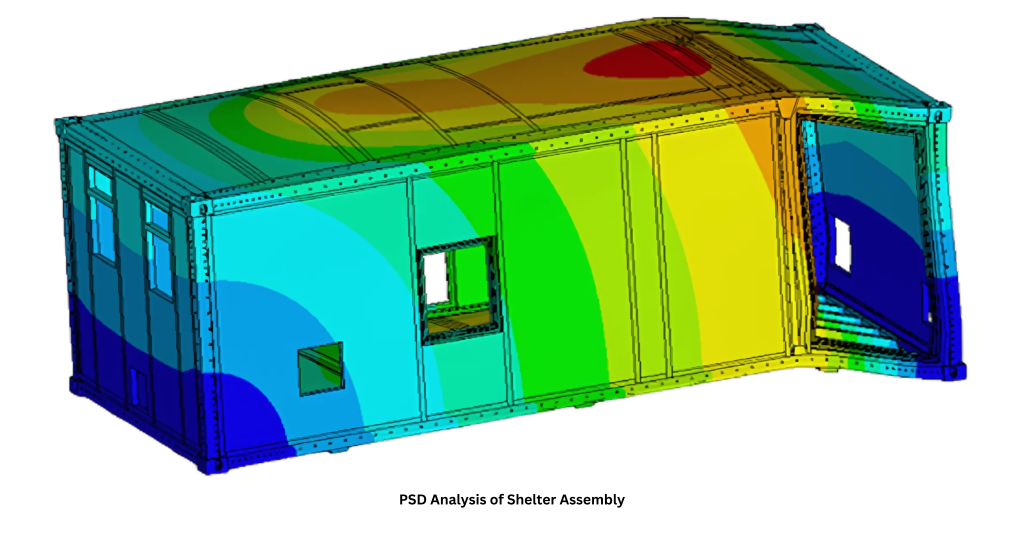Introduction
At the time of their operation, most of the structure’s experiences forced vibrations. In most of the cases these vibrations are random in nature. In case of random vibrations, the amplitude & nature of vibrations is varying with respect to time.
The random vibration response spectrum is converted from time domain to frequency domain using a tool called FFT (Fast Fourier Transform).
The resultant data is plotted in the form of PSD (Power Spectral Density) (g2/Hz) versus Frequency (Hz). This data can be provided as input in ANSYS solver to perform PSD analysis for the structure.
Shelter manufacturer from India, well known for its work for INDIAN DEFENSE, approached ANALYZER to seek assistance in evaluating the design of their newly developed shelter assembly against different loading conditions.
Workflow
• Creation of FEA model from provided 3D model using pre-processing tool – Hypermesh.
• Solving the FEA model for PSD Spectrum in ANSYS APDL Solver. To solve the model, the solver needs to be set for PSD analysis. Here we have a tool to adjust the accuracy of the solution. The accuracy is directly proportional to solution time. Hence it is decided based on the structure’s application.
• The results of PSD analysis are mostly evaluated for Fatigue assessment of the structure while in some specific applications like shelters, the structures are evaluated for induced stresses with increased allowable limits above static loading allowable stresses.
• Report the results for client’s reference.

SOLUTION
The shelter assembly is solving for PSD Analysis. The loading is provided by client itself based on the transportation/operating conditions of the shelter assembly. Considering the application, acceptable limit of accuracy is set for PSD analysis. The shelter assembly is evaluated for induced stresses.
The results showed that the induced stresses are much below the allowable limits. Thus, the shelter assembly design was predicted to be safe even in severe operating conditions during its service life.
BENEFITS
• With the help of PSD analysis, the structure or an assembly can be evaluated for the unpredicted loading – Random vibrations in a much simpler way which is not possible by a regular analytical calculation.
• The design is ensured for its reliability under dynamic loading too.
